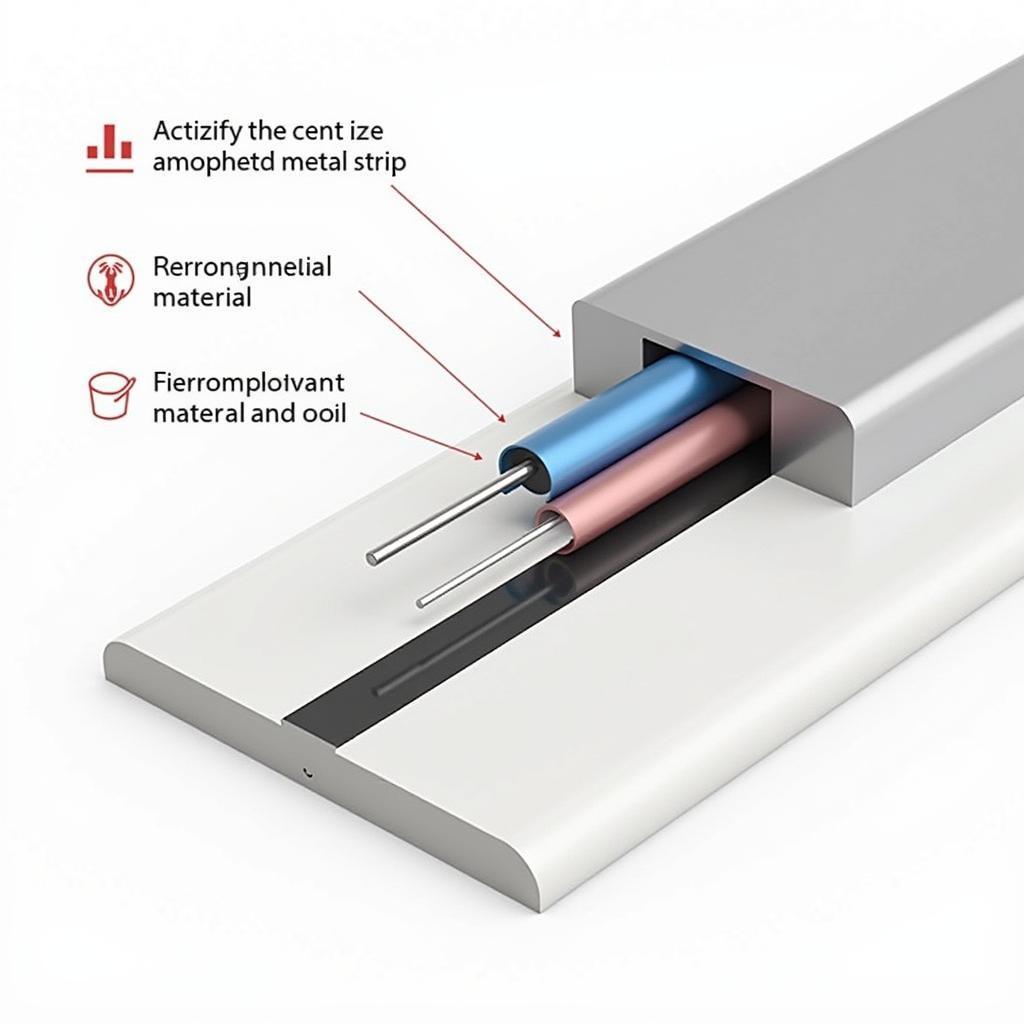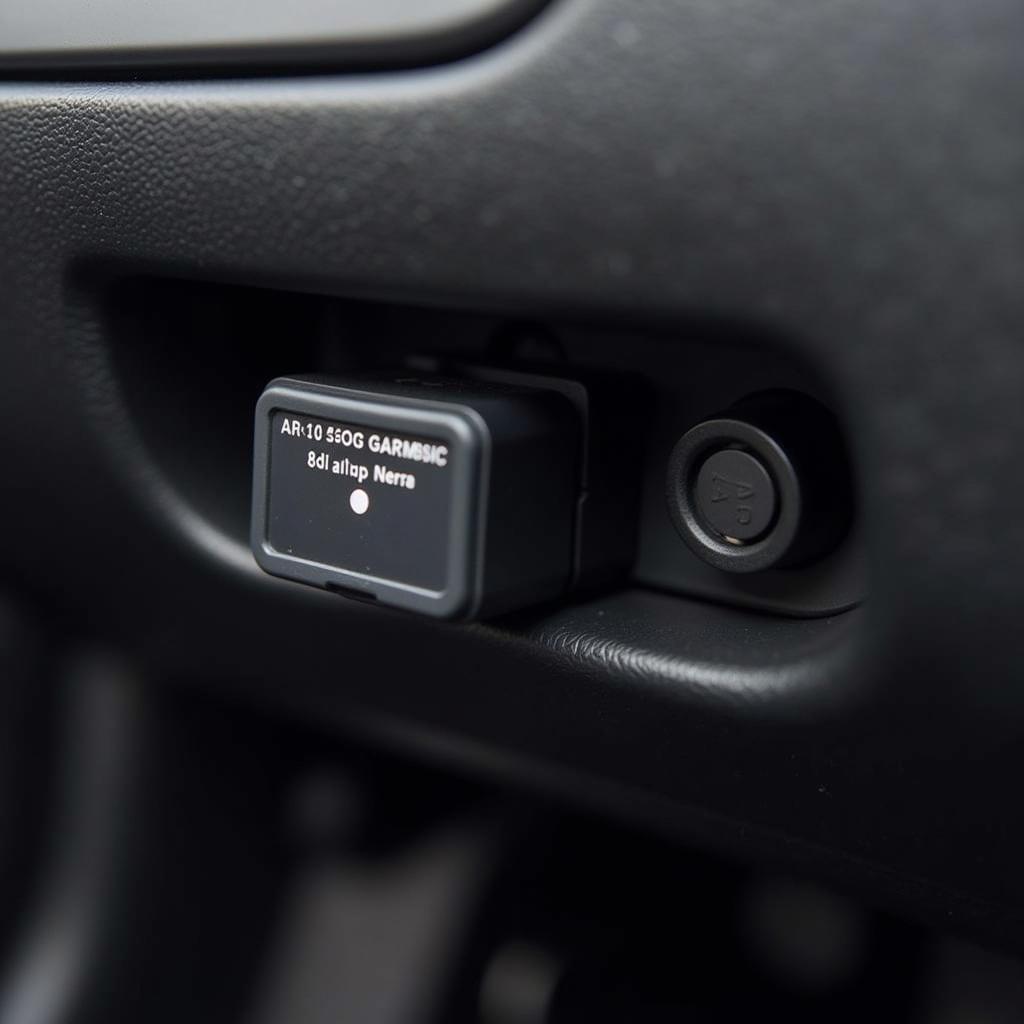Anti-theft magnetic strips are a common sight in retail stores, protecting everything from clothing to electronics. But how do these seemingly simple devices actually work? This article delves into the mechanics of anti-theft magnetic strips, exploring the technology behind their effectiveness and addressing common questions about their use. We’ll uncover the science that makes these security measures so crucial in today’s retail environment.
Retailers lose billions of dollars annually to theft. To combat this, they employ various loss prevention methods, including anti-theft magnetic strips. These strips, also known as EAS (Electronic Article Surveillance) tags, are small, inconspicuous devices attached to merchandise. They work in conjunction with detection systems at store exits, triggering an alarm if an item hasn’t been properly deactivated. Understanding how these strips function is key to appreciating their role in retail security. how does anti theft strips work
Decoding the Magnetism: How Anti-Theft Strips Trigger Alarms
So, how do these strips trigger an alarm? The magic lies in a combination of magnetism and radio waves. Most anti-theft systems utilize one of two main technologies: magneto-acoustic (AM) or acousto-magnetic (AM). AM systems use a strip containing a strip of amorphous metal. When this strip passes through the detection gates, it resonates at a specific frequency, triggering the alarm. AM systems, on the other hand, use a strip containing a small piece of ferromagnetic material and a coil of wire. When the strip passes through the detection gates, the coil resonates and disrupts the magnetic field, triggering the alarm.
 Anti-theft Strip Components
Anti-theft Strip Components
Different Types of Anti-Theft Magnetic Strips
While the underlying principles are similar, there are different types of anti-theft magnetic strips. Some are designed to be easily deactivated at the checkout counter, while others require specialized tools for removal. Understanding these variations is essential for retailers choosing the right security solution for their needs. The type of strip used often depends on the type of merchandise being protected and the level of security required. For example, high-value items might require more robust and difficult-to-remove tags. how to remove magnetic anti theft tags
Hard Tags vs. Soft Tags: What’s the Difference?
Hard tags are typically larger and more robust, often used for items like electronics and clothing. They are usually removed with a specialized detacher tool. Soft tags, on the other hand, are smaller and more flexible, often used for items like cosmetics and books. These are usually deactivated at the checkout using a deactivation pad.
## How Strong of a Magnet Sets Off Anti-Theft Retail Systems?
The strength of a magnet required to trigger an anti-theft system varies depending on the specific system being used. However, it’s important to note that attempting to defeat these systems with magnets is illegal and can have serious consequences. Retailers invest heavily in these security measures to protect their inventory, and tampering with them can result in criminal charges. how strong of a magnet sets off anti theft retail
“Effective loss prevention strategies are crucial for any retailer,” says John Smith, Senior Loss Prevention Consultant at Retail Security Solutions. “Understanding how anti-theft systems work allows retailers to implement the best protection for their specific needs.”
What is the Purpose of Anti-Theft Devices on Perfume?
Perfumes are often targeted by shoplifters due to their small size and high value. Therefore, retailers use anti-theft devices on perfume bottles to deter theft. These devices are typically small and discreet, designed not to detract from the product’s presentation. what is anti theft device on perfume
“Retailers need to stay vigilant in protecting their merchandise,” adds Maria Garcia, Retail Security Expert. “Anti-theft technology provides a crucial layer of defense against shoplifting.”
Demagnetizing Anti-Theft Strips: Is It Possible?
While there are methods to demagnetize anti-theft strips, doing so without proper authorization is illegal. Retailers have specific procedures for removing or deactivating these tags, and attempting to circumvent these procedures can be considered theft. how to demagnetize anti theft strips
In conclusion, anti-theft magnetic strips play a vital role in retail security. Understanding how they work—through a combination of magnetism and radio waves—helps appreciate their effectiveness in deterring theft and protecting merchandise. While seemingly simple, these devices are essential tools for retailers in combating shoplifting and minimizing losses.
FAQ
- What are the different types of EAS tags? The most common are AM (acousto-magnetic) and RF (radio frequency) tags.
- Can I remove an anti-theft tag at home? Removing a tag without the proper tools can damage the merchandise. It’s best to return to the store for removal.
- Are there any health concerns with anti-theft systems? The magnetic fields generated by these systems are very weak and pose no known health risks.
- How effective are anti-theft strips? They are a significant deterrent to theft and contribute greatly to loss prevention.
- Why do some stores use different types of tags? The type of tag used often depends on the value and type of merchandise.
- Can anti-theft tags be reused? Some hard tags can be reused, while soft tags are typically disposable.
- What happens if an anti-theft tag goes off accidentally? Store personnel are trained to handle these situations and will typically verify the purchase.


